
Social Status in the Age of Vermeer
A Lady Writing
By the 17th century, the Netherlands had developed a major financial industry and thriving maritime commerce in goods produced by the country’s textile mills, dairy farms, herring fisheries, and sugar refineries. The resulting large and diverse middle class supplies the rich subject matter for a portrait exhibit at Boston’s Museum of Fine Arts.
The paintings in “Class Distinctions: Dutch Painting in the Age of Rembrandt and Vermeer” are grouped into one of the three classes: the upper crust, the middle classes, and the laborers and indigent.
The Dutch elite – nobility, textile merchants, and wealthy landowners – commissioned portraits “to express and affirm their status,” according to exhibit materials. These paintings are replete with class symbols, such as the gleaming armor worn by princes to highlight their privilege as well as military prowess. The status symbols in the exhibit’s signature 1665 painting above by Johannes Vermeer, “A Lady Writing,” go beyond the silver inkwell and pearls on the woman’s writing table. Status is also implied in what she is doing: “The very act of writing tells us she is educated and literate and has the leisure time to write letters,” the exhibit states.
But in the Golden Age of Rembrandt and Vermeer, the true sign of prosperity was the Dutch middle-class, which was the largest and most highly stratified class. This big tent took in everything from trained professionals and skilled artisans to modest shopkeepers. Middle class people might be extremely wealthy shipbuilders, successful goldsmiths, respected barbers (who performed minor medical procedures), or modest tailors and bakers. They were also often defined by “the [investment] capital at their disposal,” which distinguished them from the rich who inherited their wealth and the poor who earned low wages by selling their unskilled labor.
The Shipbuilder and his Wife
“The very top of the middle class” can be seen in the above 1663 masterpiece, “The Shipbuilder and his Wife.” The shipbuilder, Jan Rijcksen, an investor in the Dutch East India Company, was so well-off that he could afford to commission a portrait by the most fashionable painter in Amsterdam: Rembrandt van Rijn. In the painting, Rijcksen is receiving an urgent letter from his wife, Griet Jans.
Interior with Women beside a Linen Cupboard
Another indication of Dutch wealth was women’s ability to become full-time housewives. Pieter de Hooch’s 1663 painting above, “Interior with Women beside a Linen Cupboard,” emphasized the linen cabinet, often the most expensive piece of furniture in the middle-class home. The woman in the fur collar (left) is showing her daughter how to care for the family’s prized linens. As middle-class women gained their independence, some worked out of their homes, for example, making lace for sale; widows were also allowed to take over their late husband’s shops.
View of the Plain of Haarlem with Bleaching Grounds
Perhaps the most interesting painting of the “lower classes” isn’t a portrait. “View of the Plain of Haarlem with Bleaching Grounds” by Jacob van Ruisdael in the early 1660s (above) is an appealing landscape that, on close inspection, shows laborers off in the distance doing the arduous work of spreading heavy strips of wet linens, soaked in buttermilk, on the grass to dry and bleach under the sun. This low-level and “back-breaking” work was primarily performed by women who earned “miserable wages,” the exhibit said. “Ruisdael gives no hint of their misery in this sweeping, majestic paean to his native city.”
A Maid Milking a Cow in a Barn
Dutch cattle produced more milk than anywhere in Europe and were often proudly depicted in paintings. Milking cows was a low-status job, however, and the woman in “A Maid Milking a Cow in a Barn” (above) by Gerard ter Borch in 1652-54 was probably either a farmer’s wife or a wage-earning maid who extracted milk for the domestic butter industry or cheese exporters.
Interior of an Inn
Moralizing was popular in Dutch paintings. Indigent men in “Interior of an Inn,” by Adriaen Brouwer in 1630, are shown guzzling beer or are either asleep and snoring or vomiting. Paintings with themes of sloth and gluttony appealed to wealthy and educated buyers, according to the exhibit.
Street Musicians at the Door
In the final room of the exhibit, the curator of “Class Distinctions,” Ronni Baer, assembled paintings of the town square and other public places where the various classes mingled in liberal 1600s Dutch society. In the above painting, however, musicians have knocked on the door of a wealthy household to entertain them. A drab color palette is used for the lower-status musicians, while the family’s silks and satins are painted in vibrant reds and blues. The maid holding the little girl’s hand is suggesting that she take a coin from her mother and give it to the musicians. Charity, the exhibit explains, was “a cornerstone of Christian life in the Dutch Republic.”
Comments are closed.




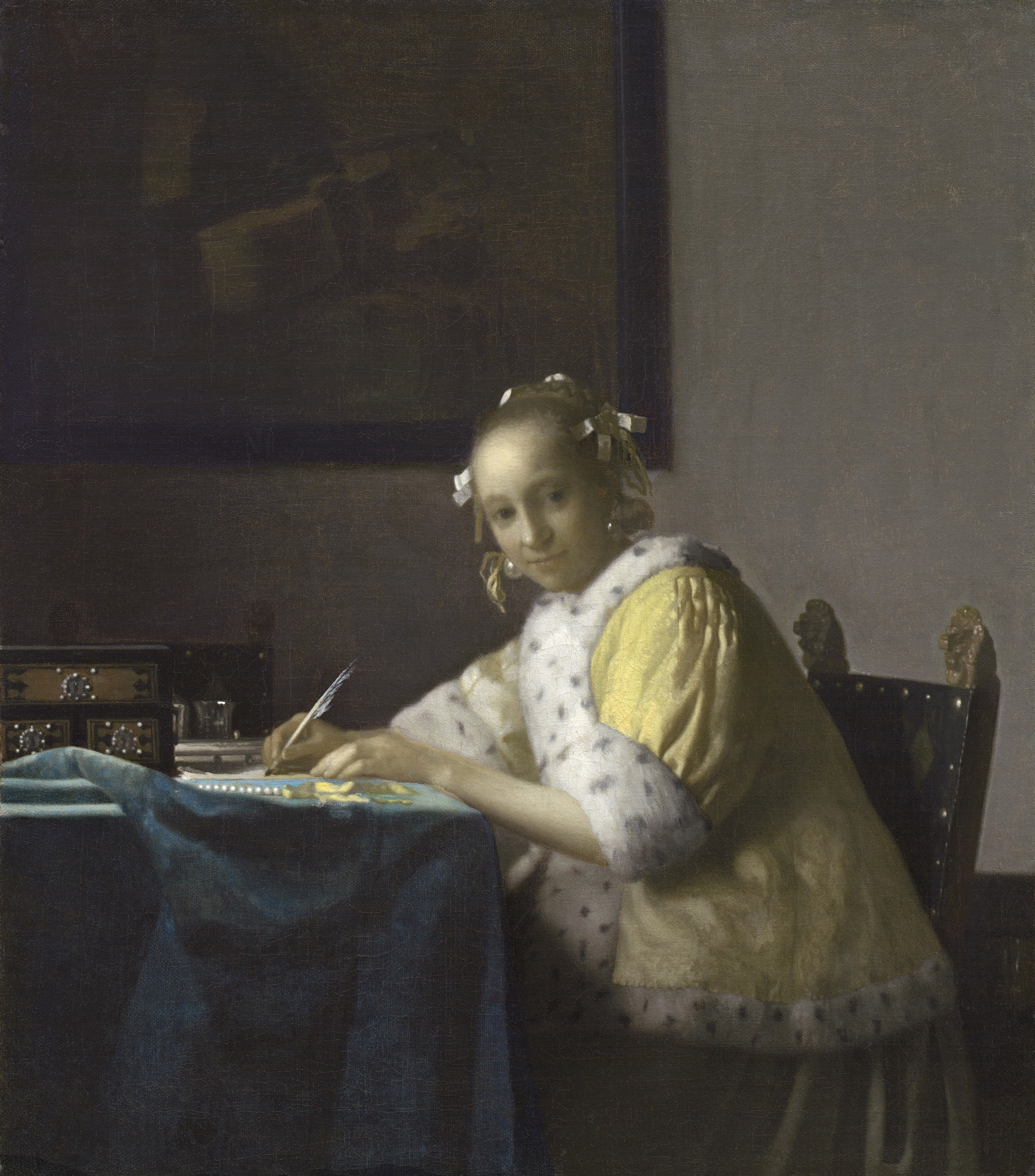

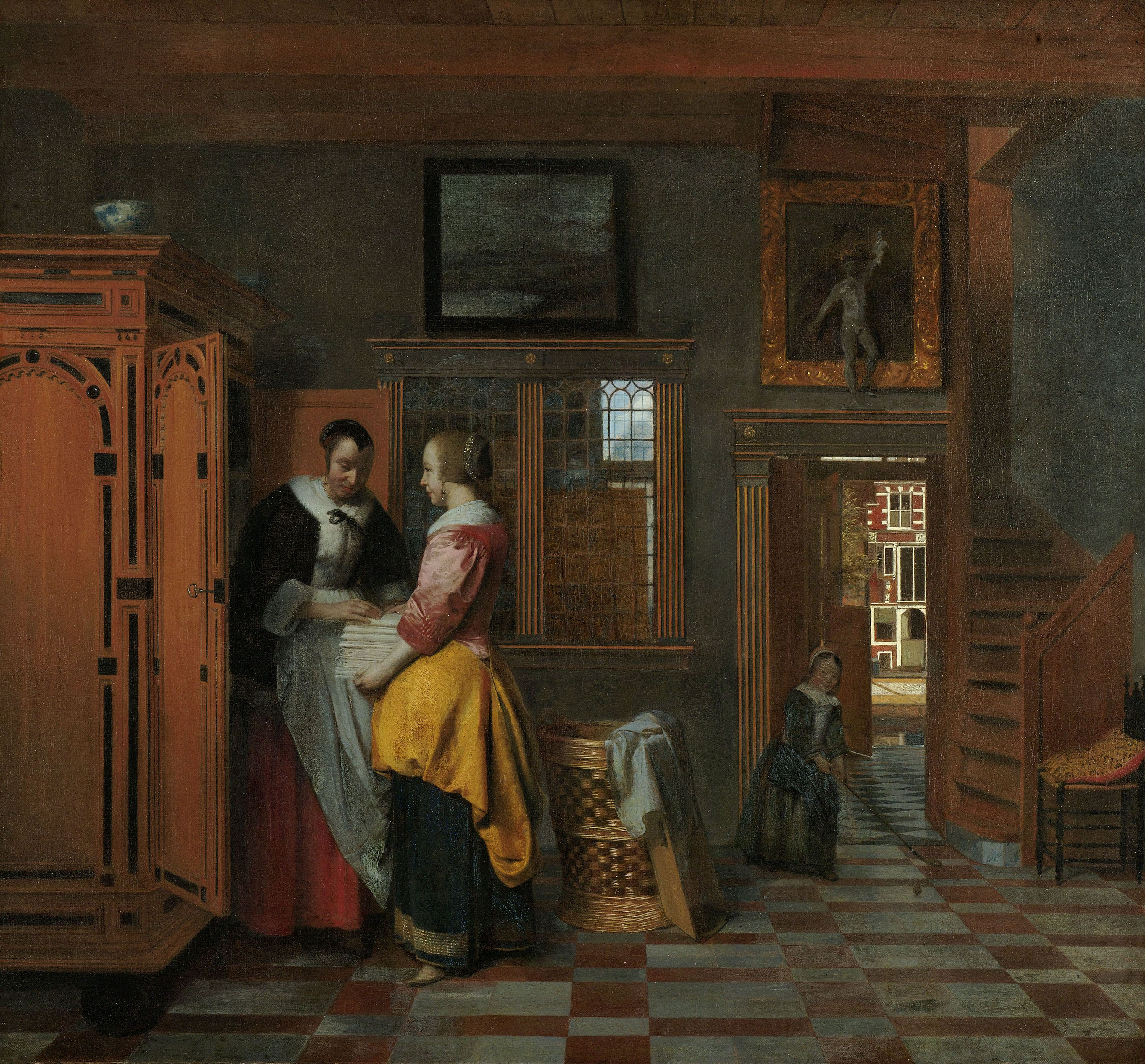
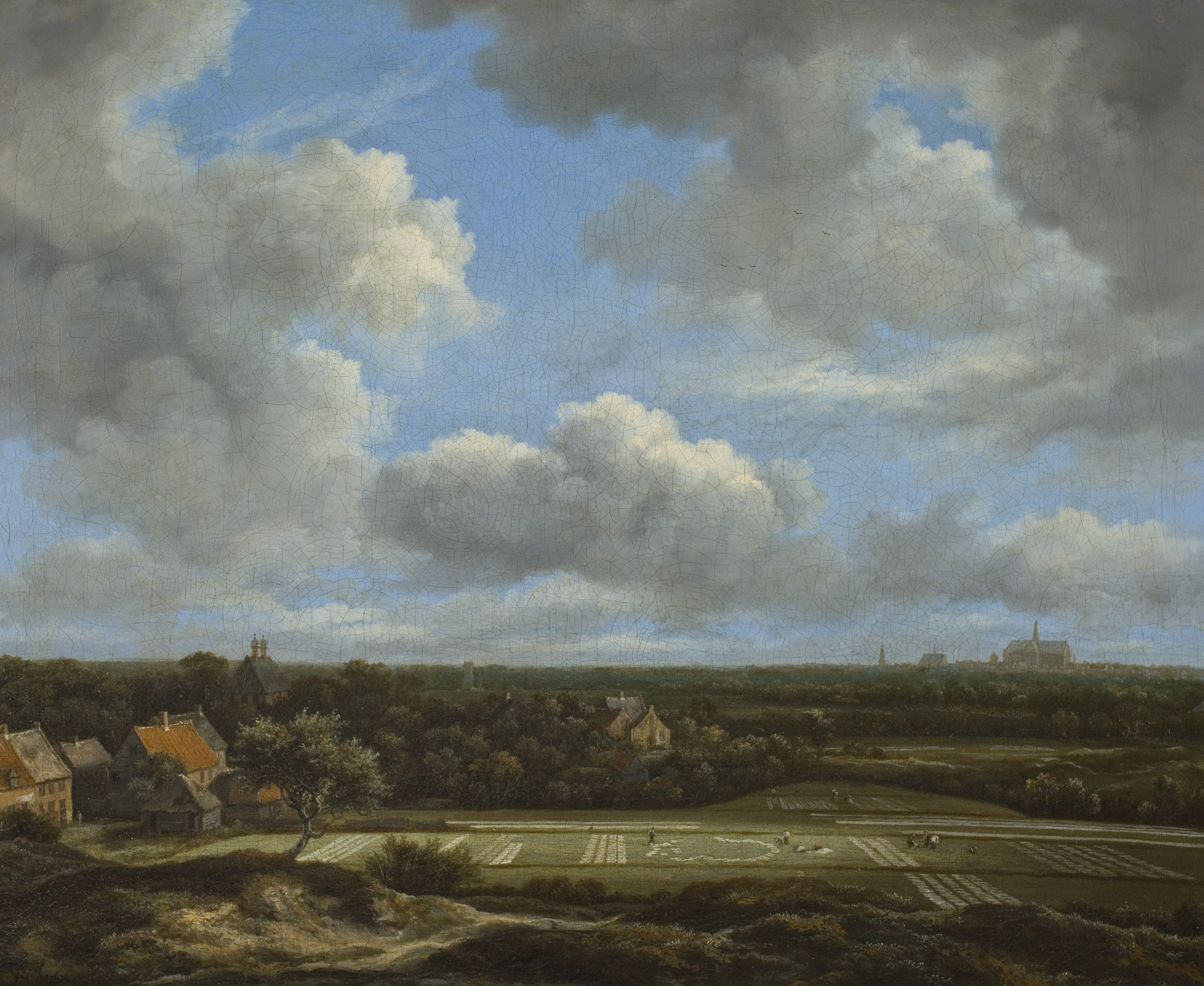
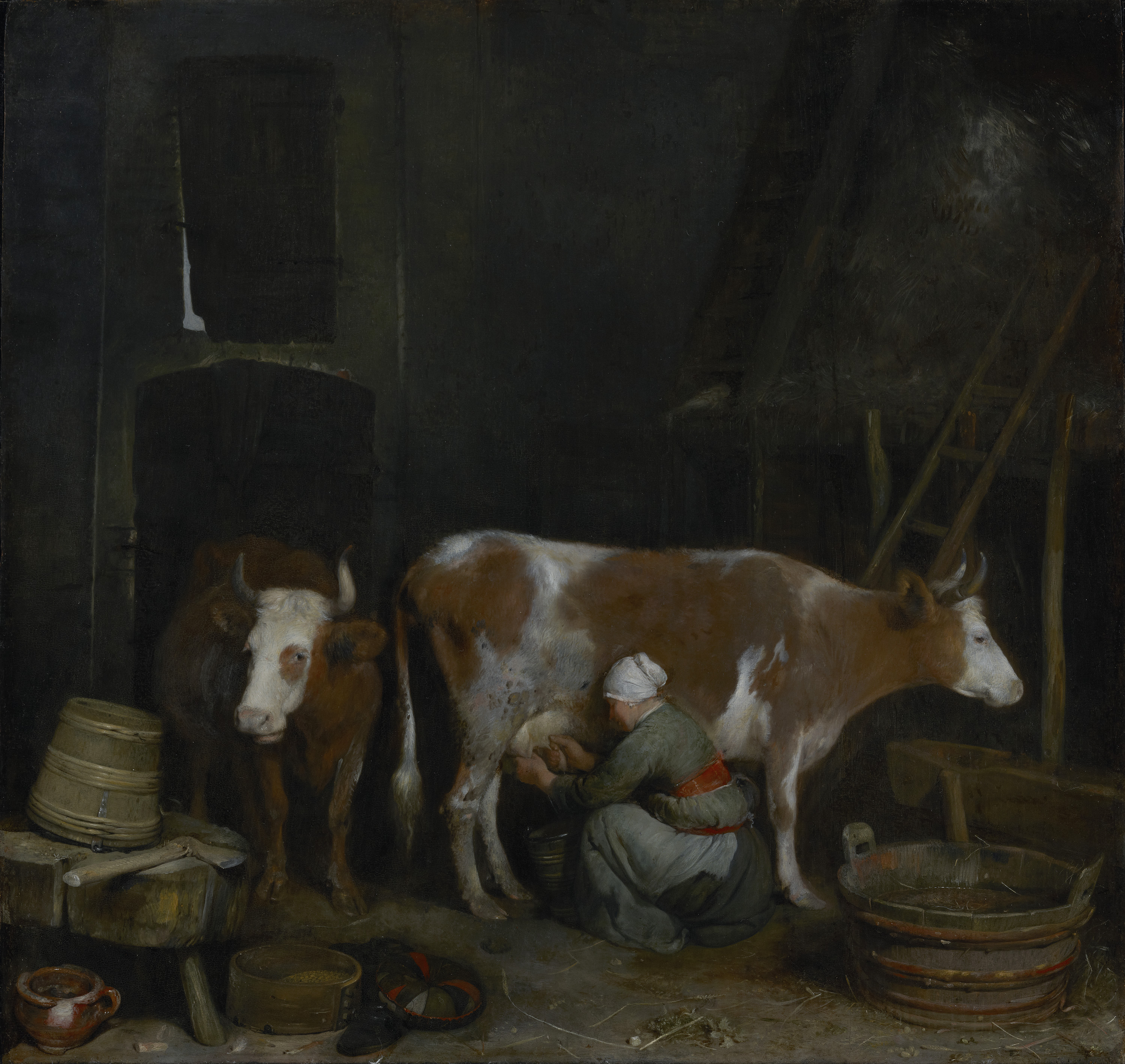
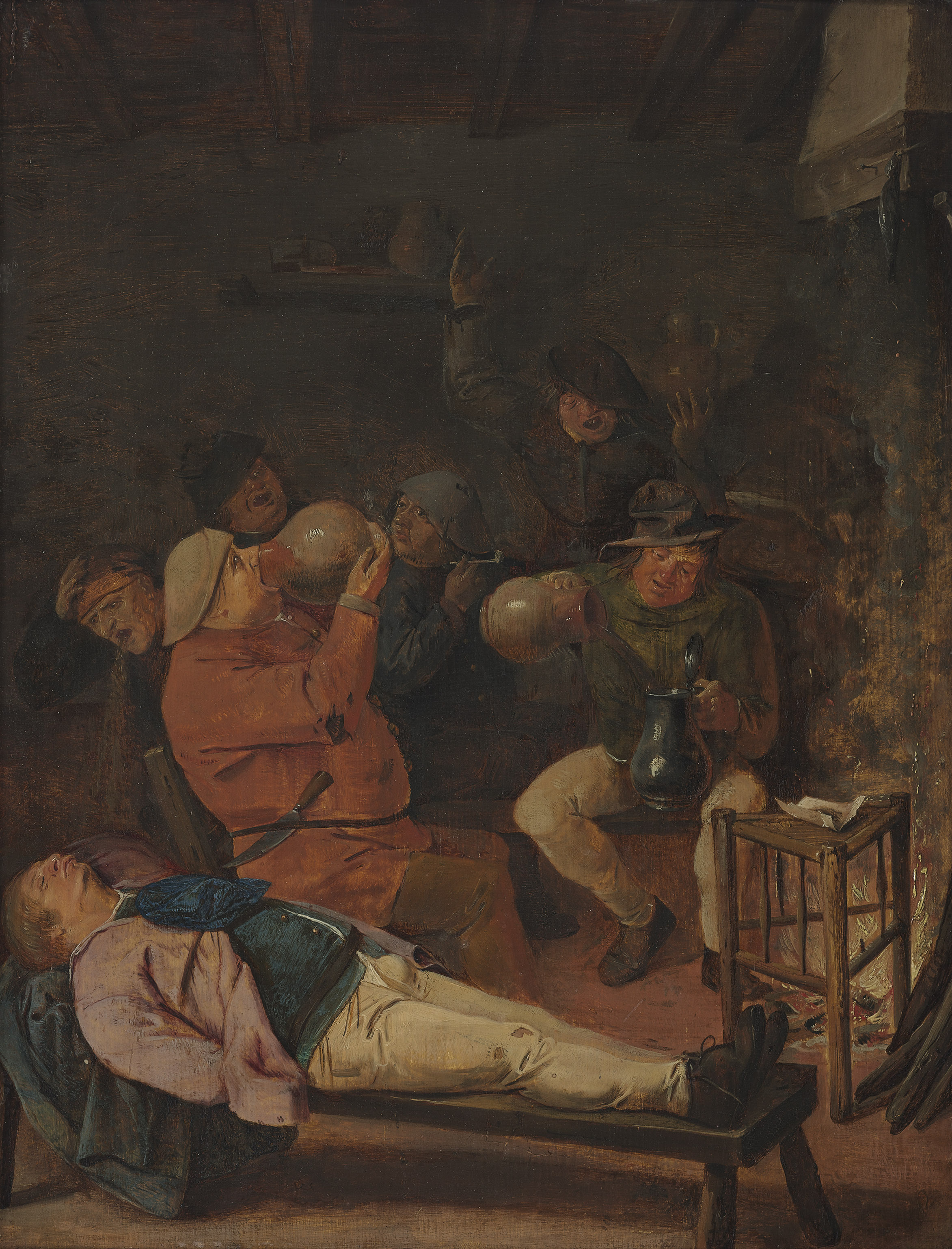
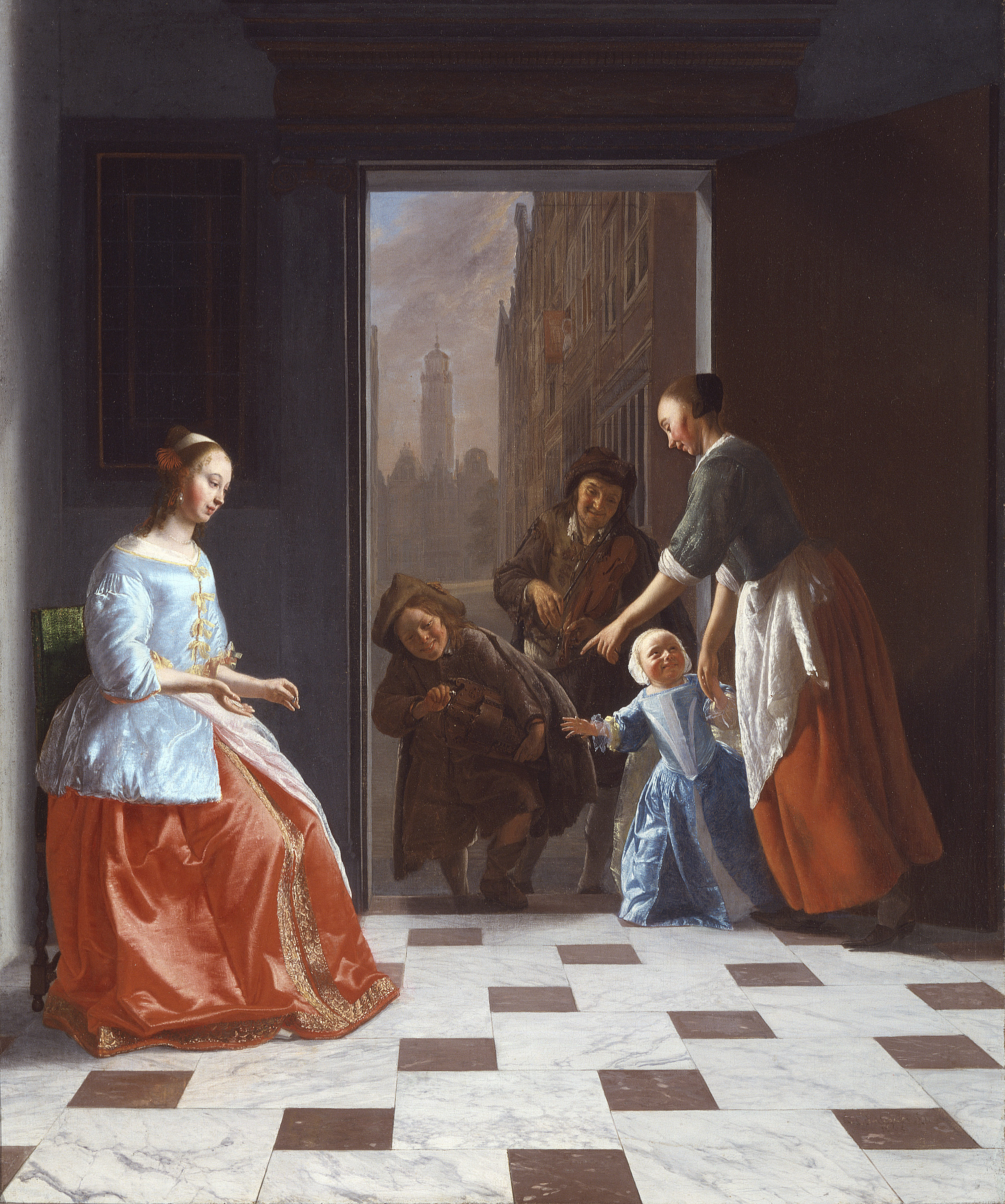



Fascinating “pictorial” commentary on the economic distinctions of another place and time. Thank you!
This is a treat for those of us who are not able to get to the museum in person. The explanations are great as they are not readily evident (to me) a few centuries later.
I read every posting Squared Away does. In fact I shared one last week on my Facebook page. You are doing valuable work on the financial ramifications of retirement in the U.S. at Boston College. (I am a graduate of Newton, ’69) Continue the work. I hope to visit this show next week when I am in Boston for Christmas. Beautiful images which demand thought from the viewer.